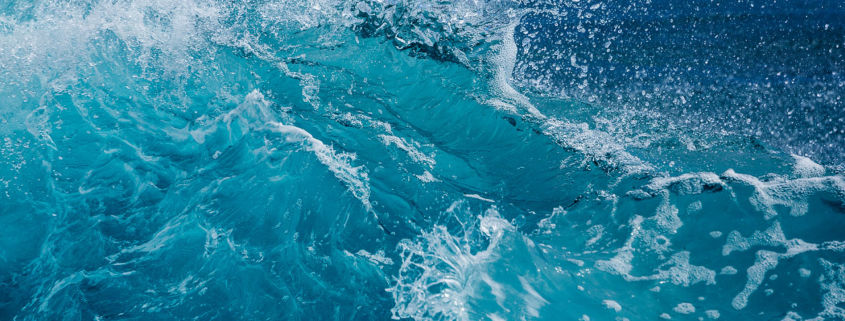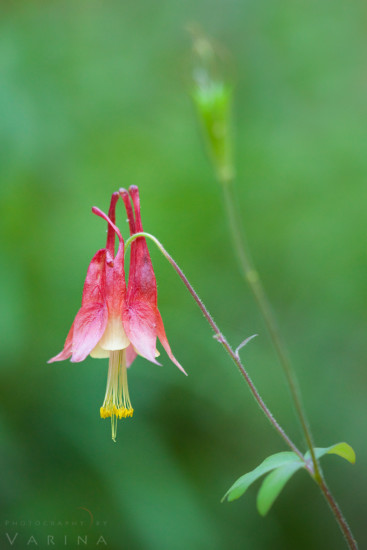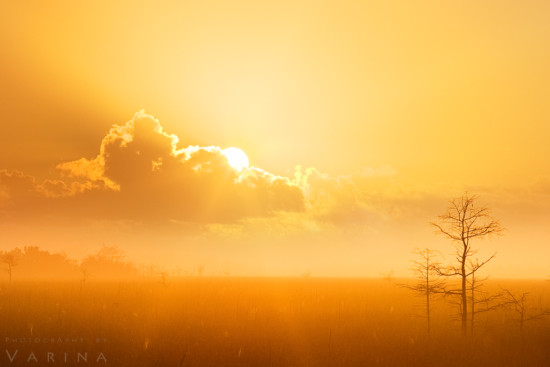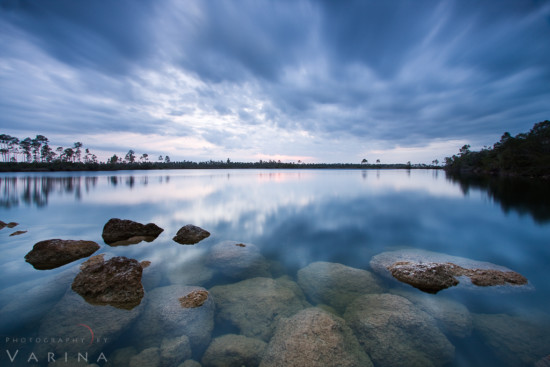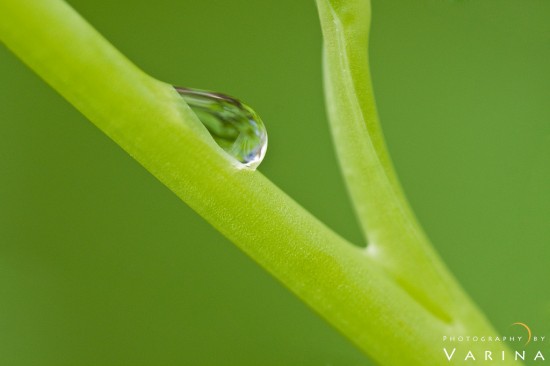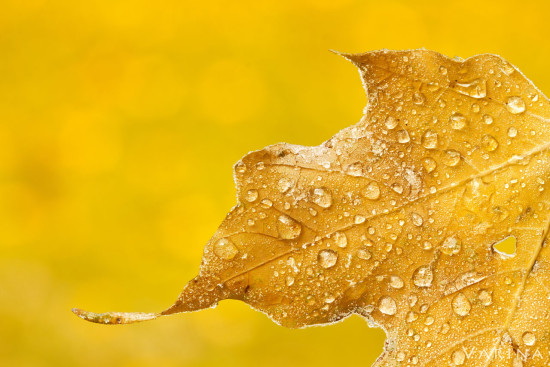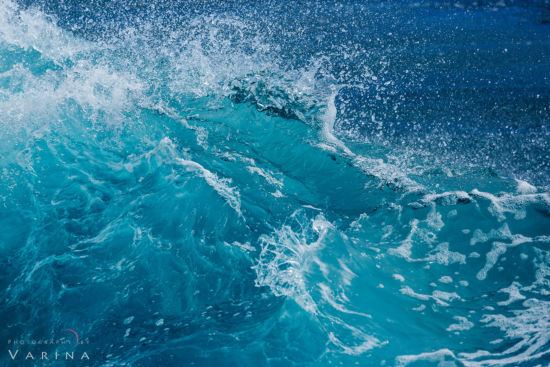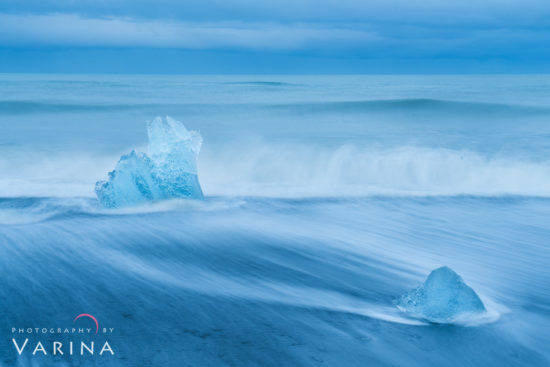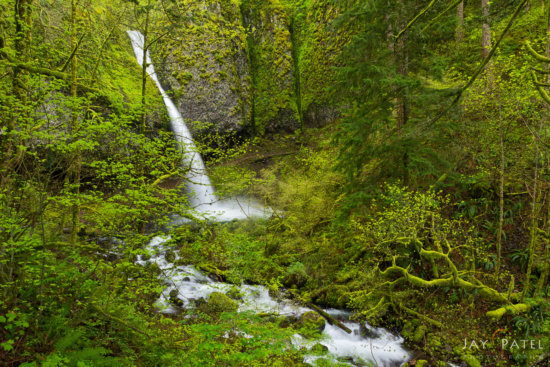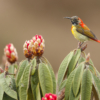5 Effective Monochromatic Nature Photography Ideas to Pursue
If you’ve been following my blog for a while, you may know that I love minimalist nature photography. I try hard to eliminate distracting elements in my nature photos with composition, camera techniques, and color choices. Monochromatic nature photography is one of my favorite ways to simplify a photo.
What is Monochromatic Nature Photography?
What do you think about when you hear the words monochromatic nature photography? Most of us think of black and white photography when we hear the word monochrome. We can also use this word to describe an image with varying tones, shades, and tints of a single base hue. Monochromatic photos are often subtle – but not always. Monochromatic nature photos can contain small areas of other colors, however the photo is dominated by single color.
Before we get started let’s take quick look at different color schemes and how we can use them in nature photography. Take a look at the following color wheel:
To use these colors effectively, you need some understanding of how colors work together to create bold contrast, a soft look, and more. The following are some common color combinations used by nature photographers.
Complimentary Colors
Complimentary colors are located across from one another on the color wheel. When placed next to each other, these colors help increase the contrast in nature photography. If the complementary color scheme is used between a subject and its background, it can help the subject stand out from its background.
Analogous Colors
Analogous colors are placed adjacent on the color wheel. Nature photos with this color scheme do not create bold contrast that is typically associated with complimentary colors. Nature photography using analogue color schemes have a subtle feel to them and often appear as lower contrast photos.
Monochromatic Color
One of the easiest times to find a monochromatic colors scheme is during the blue hour in the morning or in the evening. Take a look at this shot I took in Everglades National Park in Florida with a telephoto lens (Image #1). This is certainly a monochromatic image – it uses shades of just one color. The golden tones convey a sense of warmth. The simple color scheme is striking and unusual and the intensity of light adds a dramatic touch.
Image #2 is also example of a monochromatic nature photography. This shot of Pine Glades Lake (also in the Everglades National Park) presents the view in shades of blue. The result is a moody image… cool and stormy skies over a deep, clear lake. Notice that the rocks in the foreground and a small portion of sky near the horizon have different colors, but the image is dominated by shades of blue.
Monochromatic nature photos encourage the viewer to notice details, textures, and form (rather than contrast) in the image. To capture successful monochromatic photos, you must ensure that your photos have smooth tones and lots of details.
Capturing monochromatic nature photos requires a bit of planning and out-of-box thinking. The following are a few highly effective ideas to capture stunning monochromatic photos in nature…
#1: Take advantage of Local Geology
You can easily come away with a monochromatic photo in nature when you combine even lighting conditions with unique geology. Here is an example where I used geology and even lighting conditions to produce a monochromatic photo. I took this shot with a wide angle lens when the entire scene was in shade.
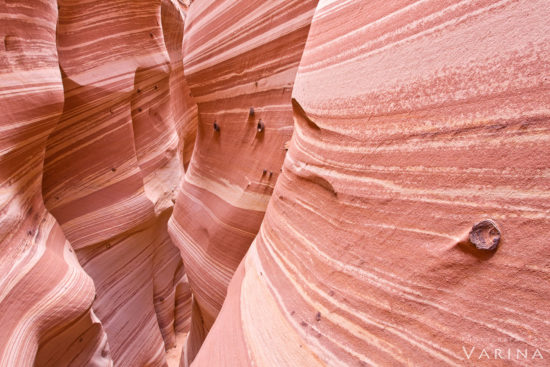
Monochromatic Intimate Landscape Photography from Zebra Canyon, Grand Staircase-Esalante National Monument , Utah
#2: Simplify Your Photography Composition
When you are faced with uneven lighting conditions, you can create a monochromatic landscape photo by simplifying your composition with a long zoom lens or a macro lens.
If you are using a macro photography lens to photograph tiny subjects, you may be able to control the background to create a monochromatic image. In this Ohio photo of a water droplet on a stem, I used a green background and a macro photography lens to create a monochromatic image. For this image, I was able to select a photography composition by carefully arranging my camera angle to get an uniform green background.
For this fall photograph of a maple leaf with frozen water droplets, I used a slightly different technique to create a monochromatic photo. I picked up the leaf and physically move it to a different location. By doing this, I was able to fill the background with soft bokeh and monochromatic colors from the fall foliage in the background.
#3: Use a Telephoto Lens for Nature Photography
Another effective nature photography workflow to capture monochromatic photo is to use telephoto lens with geology of the location. I captured this monochromatic photo of the waves in Hawaii using a telephoto lens.
A carefully planned workflow and camera settings are needed to capture fast moving waves in sharp focus. I put my camera in a focus tracking mode and selected my camera’s high speed drive mode. This allowed me to track the waves as they came towards me and capture several high speed shots.
#4: Time your Photography Composition
Timing can be a highly effective tool in creating monochromatic images. Time of day, time of year, and seasonal change can all present landscape photographers with opportunities to capture some stunning monochromatic images. Here is another example where timing played a critical role in creating a monochromatic color scheme throughout the photo.
The blue hour image above from Joksuarlon, Iceland is a perfect example of how timing and weather were used to capture a monochromatic landscape photo.
#5: Use Terrain to capture Monochromatic Colors
Under the right conditions, reflections can be highly effective to create a monochromatic landscape photo. Reflections can occur on bodies of water as well as wet surfaces. Here are some examples where reflections created monochromatic landscape photography with a wide angle lens.
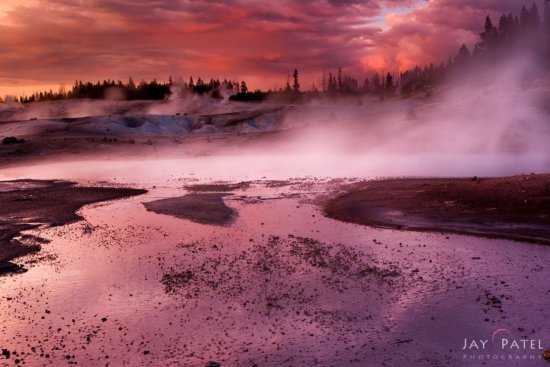
Photographing reflections in nature to create monochromatic image, Yellowstone National Park, Wyoming
You can easily create a monochromatic photo when the terrain you are photographing presents you with an even monochromatic color pallet. Light conditions, seasons, and weather also play a critical role in using terrain to create monochromatic landscape photography compositions.
Jay took the first photo of Pony Tail Falls from Columbia River Gorge in Oregon using a slow shutter speed. When we arrived at the location, Jay chose a photography composition to fill the frame with fresh green color of the rain forest. Soft light created by overcast skies provided perfect light conditions to create this monochromatic landscape photo. In the second photo of Folaldafoss in Iceland, the light and weather were were perfect for waterfall photography. However the terrain did not co-operate to create a monochromatic landscape photo.
It is important to note that even complementary and analogous color schemes that are dominated by just two or three colors can be used to simplify your photo. However, if you are using monochromatic colors for your landscape photography, you must pay attention to your in-camera workflow and your post-processing. Because monochromatic photos rely on textures and details to create impact, it is important to capture all the colors and details in-camera and then use post-processing techniques to bring out these textures and details.
Monochromatic colors can also help to set a mood. Greens are fresh and vibrant. Yellows seem warm and inviting. Blues are cool and moody. Use these colors to convey strong feelings and emotion!
So, the next time you’re faced with a cluttered scene, try to see if there is a way to enhance your landscape photography composition using monochromatic colors.

